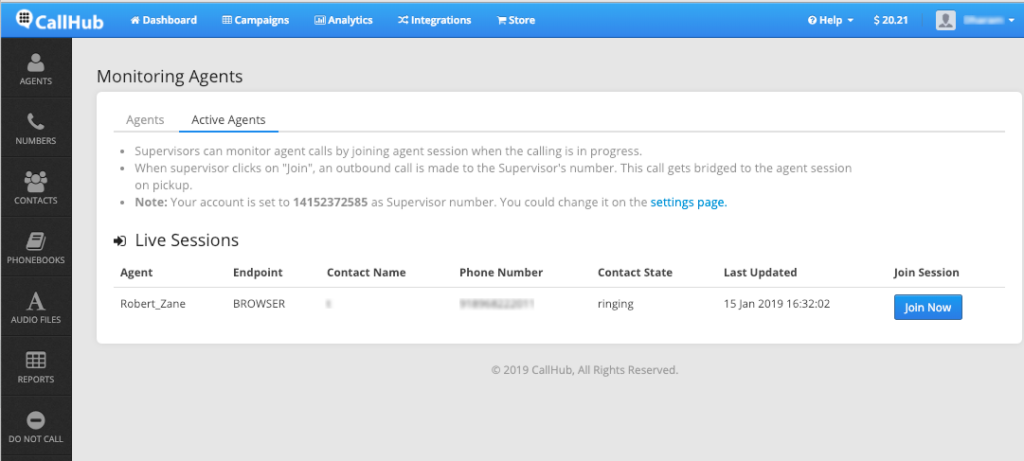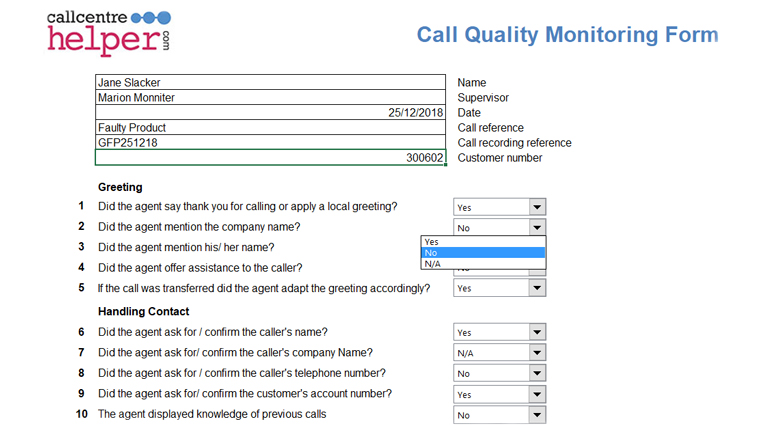Table of Contents
Call monitoring is essential if you’ve ever wondered whether the calls made from your call center are–
- Meeting expectations,
- Serving customers well, and
- Solving problems effectively.
Investigating and learning from calls made through your call center helps improve your performance.
Call monitoring allows you to listen to, record, and analyze incoming or outgoing calls from your call center. It will enable managers and team leaders to understand how well the team is functioning, give feedback to agents and fill any gaps in their customer service.
This article explores the benefits of call monitoring and how you can implement it for astounding results.
What are the benefits of call monitoring?

These statistics prove we need to invest in monitoring our call centers. Here are the different benefits of call monitoring:
1. Boost sales
94% of customers surveyed report that excellent customer service makes them more likely to purchase again.
Call monitoring helps managers understand how the sales team is pitching certain products, customer responses to their offerings, and how they could improve their customer experience.
2. Improves customer experience
Call center agents are your customer-facing team. How they handle calls, customers, and concerns reflects your brand. Not only that, they are the team that knows first-hand what is happening with your customers.
You can leverage these insights from your team to improve customer experience by—
- Noticing frequently asked questions, preparing agents’ answers, or requesting your team to create helpful guides. 90% of customers expect an immediate response to their query.
- Observing common bottlenecks faced by customers and work with your organization at large to solve them.
- Understanding what your customers like about you and what they want to see improved.
3. Aids agent training
49% of contact centers report that employee satisfaction and growth are among their top 5 KPIs.
The only way anyone gets better is by being aware of their strengths and weaknesses and how to improve both. With call monitoring, agents can be made aware of gap areas in their calls and trained to address them and improve their performance.
Also, when employees are encouraged, trained on skills they lack, and given adequate feedback, it reduces churn. Over time, with data acquired from call monitoring, you will be able to identify the best traits in an agent and create an ideal agent profile to inform your hiring decisions.
4. Improve agent performance
The call center monitoring process removes the guesswork from an agent’s job. Instead of a trial-and-error approach to handling customer inquiries, agents have data on which to rely.
Here are key metrics you must track to improve your results and achieve your goals–
- Average handle time: How long do calls last on average?
- First call resolution: Are most queries resolved during a customer’s first call to your call center?
- Customer satisfaction score: Do customers feel happy with the resolution at the end of the call?
5. Recruit and train new agents
Once you know the agent performance metrics that work for you, critical areas of improvement, and the skill gap within the team, it could also affect how you recruit and train new agents. Ensure you hire agents with skill sets that you want to see within the team.
Now let’s look at the types of call monitoring for your call center.
Types of call monitoring
Call monitoring goes beyond listening to recorded conversations of your agents. It is a functional evaluation of–
- Conversations between your agents and customers.
- Market response to your offering.
- Customer experience at your call center.
- Insights that can lead to organizational-level decision-making.
This is why, a one-size-fits-all approach to call monitoring may not be suitable. You can use different types of call monitoring for different evaluation purposes. We explore them in this section.

1. Live call monitoring
With live call monitoring, you can listen to live calls remotely. Managers can get onto a live call and listen in while agents speak to their target audience.
On CallHub, we offer the live call monitoring feature with which you can–
- Listen to a live call without interrupting it, and the ongoing conversation does not get disturbed.
- Enter notes onto the CallHub dashboard about the call in progress.
- Track metrics you would like to improve.
Once you are done listening, you can hang up the call without any consequence on the ongoing conversation. The agent and customer will not know you were listening in. This feature is handy when conducting routine evaluations, surprise checks, etc.

Live call monitoring gives your real-time insights into your team’s performance in action, customer responsiveness, and overall market environment.
2. Whispering
Call whispering is the perfect call center monitoring tool when training new agents. This tool allows managers to speak with the agent while on a call. The person on the other side of the call will not be able to hear this conversation.
This tool directly impacts the first call resolution and average handle time metrics by accelerating solutions.
3. Call recording
We’ve all been on customer service calls where they let us know they would be recording the call for “training and quality purposes.” It is the most traditional way managers monitor their call center’s activities.
The drawback of this method is that there can be no live assistance to agents. However, it helps managers check in on different calls at their convenience.
4. Call barging
Call barging helps when an agent is really struggling to resolve an issue and the customer is distressed on their end. A manager can drop in on the call and take over from the agent.
While in live call monitoring, a manager only discreetly listens to a conversation; with the call barging feature, they become active participants by barging in on the conversation.
This feature is handy when handling irate customers to ensure a swift resolution and retain the customer.
Is call monitoring illegal?
The short answer is no. Call monitoring is not unlawful. It is a great way to ensure call centers can monitor their processes. However, some compliance laws apply. Here are some call monitoring laws in the USA and Canada–
United States
- U.S. federal law requires consent for call monitoring and recording from all parties involved. This is why the phrase, “This call may be monitored or recorded for quality assurance purposes,” is all too familiar to everyone.
- When a call center in one state calls a recipient in another, then call monitoring laws in both states will apply.
- There are criminal penalties for flouting compliance laws in all states except Vermont. Clients can also pursue civil suits against organizations.
Canada
Canadian laws under the Personal Information Protection and Electronics Government Act (PIPEDA) mandate:
- Letting the call recipient know at the beginning of the call if it will be monitored or recorded.
- Letting the recipient know how the recording will be used.
- Providing an alternative means of communication if the call recipient does not agree to call recording.
Call quality monitoring best practices
Now that you know the benefits and different ways to monitor call quality, the question is – how do you implement it systematically?
We list call quality monitoring best practices in this section that you can follow to ensure your monitoring activities yield results.
1. Build a quality management team.
You can hire Quality Analysts to work full-time on call monitoring or hire a third party to examine your call center’s performance on different metrics.
You could also form an internal team with senior agents who know what it takes to create and execute successful calling campaigns.
Shifting the responsibility of call monitoring from a single manager to a team of people will ensure your results improve quickly, suggestions stem from different people, and different perspectives align to boost performance.
2. Create quality assurance scorecards.
Scorecards are an evaluation tool that managers and quality analysts use to measure and review agent performance. This will help you chalk out the criteria on which agent performance is reviewed and the metrics necessary for your team.
Here’s an example of how a scorecard should look like–

3. Narrow down the best call monitoring type for you.
The decision on the best type of monitoring is based on two factors:
- Does every agent need to be monitored in the same way? For example, new agents would require call barging more than experienced, senior agents.
- Does every campaign require monitoring to the same degree? A sales-based campaign may look very different from a customer assistance call. Do they both require the same types of call monitoring?
4. Save calls that serve as excellent examples
You can use real examples from within your organization to train agents and provide feedback. Save calls that are an ideal example of quick call resolutions, great handling times, etc.
You can also save calls where a critical error was made to serve as a learning for agents.
5. Invest time in improvement
The insights you receive can help you not only improve agent performance but also discover processes that need improvement.
Once you identify crucial areas of rectification, invest time in planning and executing a plan to resolve these gaps.
Explore more on CallHub
Are you looking for more ways in which you can improve the results of your call center? CallHub’s call center software is equipped with the latest features, such as–
- Spam label shield, to protect against spam labels and increase pick-up rates by 20x.
- CallHub’s mobile app so your campaigns can run on the go.
- New and improved agent reports understanding call center performance.
- Live call monitoring to ensure your campaigns are running smoothly.
Featured Image Source: fauxels

